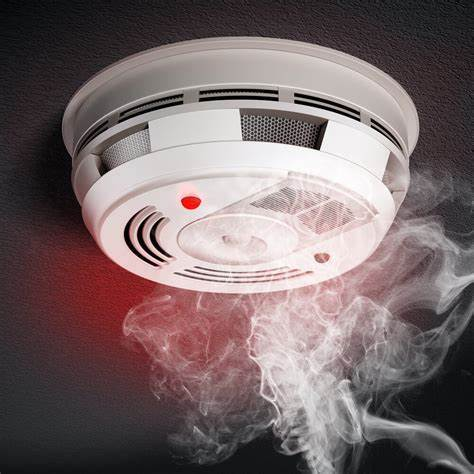Smoke alarm or smoke detector?What is the difference?
Many people have heard of smoke alarms or smoke detectors, and many may have used them synonymously without knowing that they are actually different devices. The two devices are similar, but not identical, and this distinction can play an important role in emergency situations
The main difference between smoke detectors and smoke alarms is that if not connected to other components, the detector may not make you aware of a possible fire. This is because smoke detectors can only detect smoke and do not sound an alarm. Once triggered, the device sends a signal to the acoustooptic notification device, which will issue an alarm. Inside the smoke detector, you'll find a power source and a built-in sensor that can react to smoke in different ways. Since the device is required to work with other fire alarm components, smoke detectors are mandatory in buildings, businesses, schools, hospitals, and any other place where a fire alarm system is required.
The most commonly used smoke detectors are photoelectric and ionic.。
Photoelectric smoke detectors use a light source and a light sensor to detect smoke. The light source in the sensing room is positioned at a certain Angle with the sensor. However, when smoke enters a room, smoke particles block light and partially reflect it off sensors, triggering an alarm. One of the advantages of photoinductive smoke detectors is that this type of detection tends to work better in the early stages. This means photoelectric smoke detectors respond better to smouldering fires.
Ionic smoke detectors use ionized particles to detect the presence of smoke. Each ionization smoke detector carries a small amount of radioactive material and is placed between two electrically charged panels. The reaction between these elements causes the air to ionize and generate an electric current between the two plates. When the smoke enters the room, the air flow is interrupted and the alarm is triggered. Understanding this process makes it easier to understand why this type of smoke detector is better at handling smoke from flames and tends to respond better to smoke from flames.
As it stands, one type of smoke detector is better for a burning flame and the other is better for a smouldering flame. Which one should you choose? The best answer is both. In fact, the U.S. Fire Administration recommends that every home be equipped with ionization and photoelectric smoke detectors or dual-sensor smoke alarms to maximize protection from both fast burning and slow smouldering fires.
The main difference between smoke detectors and smoke alarms is that if not connected to other components, the detector may not make you aware of a possible fire. This is because smoke detectors can only detect smoke and do not sound an alarm. Once triggered, the device sends a signal to the acoustooptic notification device, which will issue an alarm. Inside the smoke detector, you'll find a power source and a built-in sensor that can react to smoke in different ways. Since the device is required to work with other fire alarm components, smoke detectors are mandatory in buildings, businesses, schools, hospitals, and any other place where a fire alarm system is required.
The most commonly used smoke detectors are photoelectric and ionic.。
Photoelectric smoke detectors use a light source and a light sensor to detect smoke. The light source in the sensing room is positioned at a certain Angle with the sensor. However, when smoke enters a room, smoke particles block light and partially reflect it off sensors, triggering an alarm. One of the advantages of photoinductive smoke detectors is that this type of detection tends to work better in the early stages. This means photoelectric smoke detectors respond better to smouldering fires.
Ionic smoke detectors use ionized particles to detect the presence of smoke. Each ionization smoke detector carries a small amount of radioactive material and is placed between two electrically charged panels. The reaction between these elements causes the air to ionize and generate an electric current between the two plates. When the smoke enters the room, the air flow is interrupted and the alarm is triggered. Understanding this process makes it easier to understand why this type of smoke detector is better at handling smoke from flames and tends to respond better to smoke from flames.
As it stands, one type of smoke detector is better for a burning flame and the other is better for a smouldering flame. Which one should you choose? The best answer is both. In fact, the U.S. Fire Administration recommends that every home be equipped with ionization and photoelectric smoke detectors or dual-sensor smoke alarms to maximize protection from both fast burning and slow smouldering fires.











